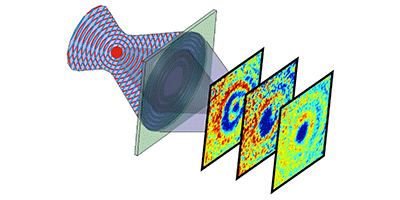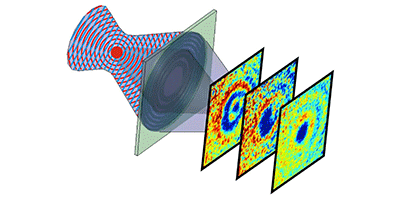Big Shifts on an Atomic Scale
Galileo understood that glass shaped into lenses could be used in telescopes, but he didn’t know that focusing was due to phase shifts of electromagnetic waves caused by the delayed response of electrons in the material. These shifts are the basis for much telecommunications technology and, in principle, the size of the object scattering the light doesn’t matter. Theory says that under the right conditions, the phase of light can shift by π radians when it scatters from a single atom. Andreas Jechow and colleagues at Griffith University in Brisbane, Australia, now report in Physical Review Letters experimental evidence that this is indeed the case. Their ability to achieve a controllable phase shift may enable new kinds of photonic information processing.
Jechow et al. directed UV laser light onto a single trapped ytterbium ion and observed the interference between the incident light and the light scattered from the ion. The Griffith lab had previously developed an imaging system with resolution on the order of a wavelength. This allowed the authors to observe the interference of the incident and scattered light as concentric rings. From the ring spacing, they determined the phase shift, which varies with the laser frequency as it is tuned across an atomic resonance. With this setup the authors report a total phase shift of just under π/ 2 radians.
Because the controllable phase shifts are produced at low light intensity, it may be possible to perform phase-contrast x-ray microscopy on samples where too much illumination power would otherwise cause damage or distortion. Jechow et al. also propose that a single-atom phase shifter might be used as a quantum repeater, detecting and reproducing phase-shift encoded cryptographic information for transmission over long distances. – David Voss





